Should I paint or stain my fence?
Invest in the care and maintenance of your fence to ensure it remains strong and looks great for years. Here's where you can start.
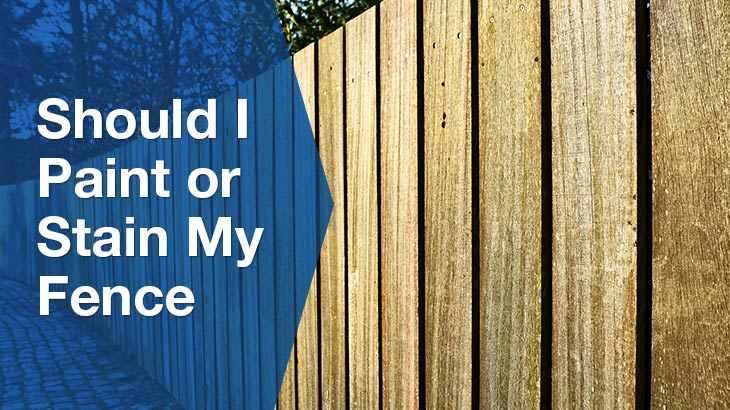
Wooden fences are an elegant way of marking the boundary of your property. They offer security, privacy, and, with a little TLC – immense curb appeal!
Invest in the care and maintenance of your fence to ensure it remains strong and looks great for years.
When it comes to the care of their wooden fences, a lot of homeowners want to know whether to paint or stain. We’ll lay out some of the considerations of both so you can make an informed decision for your fence.
Painting vs Staining?
Painting and staining are both effective methods for protecting your fence against the elements, pests, and rot. They extend the lifespan of your fence and make it look better.
However, how do you choose the best option for your fence?
Understanding the difference between the two will help nudge you over the fence of uncertainty.
| Paint | Stain |
|---|---|
| Paint can transform the entire look of the fence with a different colour. | Stain is less dramatic; the grain of the wood is still visible because the colour is not as opaque. |
| Paint will peel and crack as it wears over time. You need to scrape and sand off the old paint every time you want to repaint. | Stain seeps deep into the wood and fades over time. It is easier to reapply as it does not require sanding or scraping. |
| Paint sits on the surface of the wood, restricting the ability of the wood to breathe and increasing the moisture content, encouraging rot. | Stain soaks into the wood, allowing the wood to breathe and show off its natural grain and beauty. |
These are the functional differences between paint and stain, but there is also a critical difference in cost.
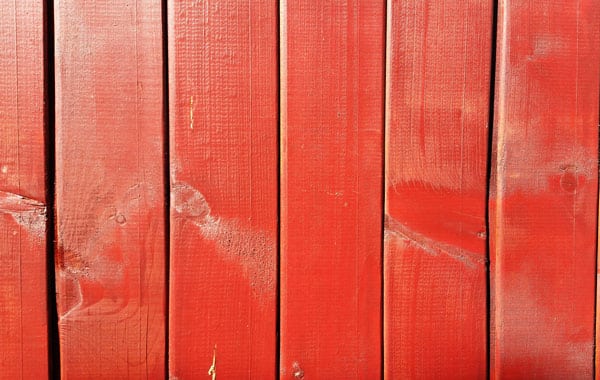
Image from: pixabay by Nebenbei
The Difference in Cost Between Paint and Stain
Litre for litre, stain is less expensive than paint. But you will need a lot more stain than paint to get the job done.
Stain seeps into the wood. Thus, you need to apply more to achieve the desired effect.
On the other hand, stain does not need reapplication as often as paint. It ages more gracefully as it fades with time.
Paint requires a lot more work. Old paint needs scraping off every time you repaint.
Paint will also chip and peel as it ages, demanding more immediate attention.
In the long run, paint is more expensive than stain due to more frequent repaints and the amount of work required to do so.
What You Need to Know Before Painting or Staining
There are several factors you should take into account before you paint or stain your fence. These are:
The Amount of Work Involved
Painting or staining your fence can be a DIY project, but this is not to say that it is a simple task to undertake.
To paint or stain your fence, you will need thorough preparation and meticulous technique. Plan for help in advance.
Alternatively, you can leave it to the professionals and reach out to an expert fence painter to get a free quote here.
Research Your Options
Ensure you get the highest quality products for a long-lasting finish.
You should also look up how the paint or stain will look as it weathers, as this could save you money through less frequent reapplications.
Prepare Before Painting or Staining
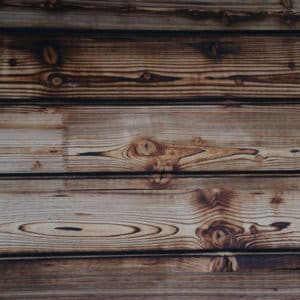
Image from pixabay
Establish the prep you need to do before you embark on the actual painting or staining.
A raw wood fence will readily accept a coat of stain but will need sanding and smoothing before painting.
The fence will also need a coat of primer before painting for excellent adhesion and a proper finish.
Thoroughly clean your fence before painting or staining for better and longer-lasting results.
You may want to use the services of a reliable fence expert to help ease the load and get the job done right.
Check the Weather Forecast
Check your weather forecast to work out the best time to paint or stain your fence.
Before you stain your fence, ensure it has dried out for at least five weeks after wet weather.
Dry weather with little or no humidity and temperatures of no less than 10ºC is ideal.
A stain needs at least two days with no rain after application to set, while the paint will take anywhere from 4-8 hours to dry.
Get the Right Tools for the Job
Your safety is paramount! Ensure you get the right protective gear when sanding and working with toxic chemicals.
Gloves and a face mask are compulsory. No exceptions.
Also, ensure you are using the right tools for the application of your paint or stain.
For instance, you should use a natural bristle brush or a cotton rag to apply the stain. The rag applies less stain per coat, providing a better-looking finish.
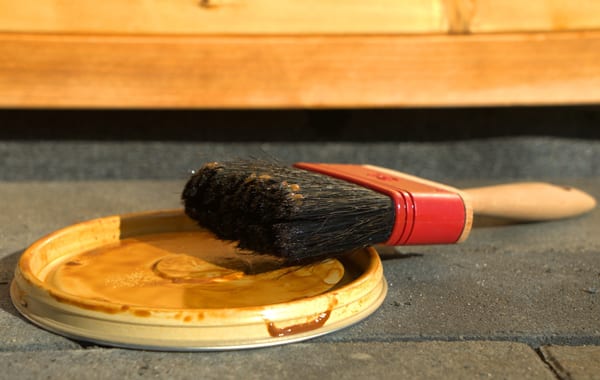
Image from pixabay
How to Tell When It’s Time to Touch up Your Fence
With wooden fences, moisture is enemy number one.
Painting and staining create a barrier that protects the wood from moisture damage.
How often you will need to repaint or restain your fence is subject to the weather in your region. Wetter regions require more frequent reapplications than sunnier areas.
A good quality paint or stain will delay the ravages of Mother Nature, but eventually, you will need to re-do the paint or stain job.
Check for beads of water on the surface of your fence to tell if your stain is still intact.
Droplets of water show that your fence is still protected and impermeable to moisture. The lack of beads means it is time for reapplication.
It is easier to tell when it is time to repaint the fence. Weathering causes the paint to chip, crack and peel off. When this happens, it is time to crack open that can of paint once again.
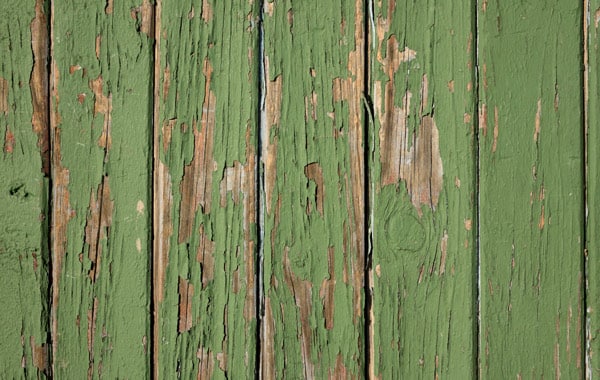
Image from pxhere
Painting
Painting can present a vibrant option to protect your fence from moisture and decay. But it is not without its shortcomings. Here are the pros and cons of using paint on your fence:
Pros
- It is a great option if you wish to colour-coordinate with the rest of your home.
- Dries within a matter of hours, offering more immediate protection from the elements.
- Carries a lower initial cost – a lot less paint is needed when compared to stain.
- Provides a broader range of colours to choose from; you can even select the sheen you’d like.
Cons
- Involves a lot more work as you need to scrape off the old paint before every repaint.
- Requires more frequent maintenance, depending on the quality of paint and weather.
- Requires priming and multiple coats to look uniform. All these add up to make it more expensive in the long run.
Staining
Staining helps keep the natural look of the wood while protecting it from weathering. But it too has its benefits and drawbacks.
Pros
- Yields a more even colour with less effort.
- Enhances the natural look of the wood for a rustic charm.
- Shows wear more gracefully than paint. They do not crack or peel, maintaining the appeal of the fence.
- Does not need priming or special prep. Raw, rough wood readily takes on the stain.
- Lasts longer than paint and needs less frequent reapplications.
Cons
- High initial cost due to the need for more stain to treat the fence.
- Need specific weather conditions during application for the best results.
Verdict
Ultimately, the choice of whether to paint or stain your fence boils down to personal preference.
It is evident, however, that a stain offers more versatility and is less expensive in the long run.
A good paint or stain will protect your fence and enhance the look of your home. Ensure you get the job done right by hiring a professional from a credible source like Service Seeking Australia.
Get free quotations from several fence painters to ensure you are getting the best value for your money!
